Cultivating Connection and Care – The Case for Family Nature Clubs
Table of Contents: JSE March 2015 — Sustainability: What’s Love Got to Do with It?
PDF: D’Amore JSE March 2015 Love Issue
Abstract: This article briefly summarizes a body of research in which love is understood to be at the core of three primary life experiences that foster life-long care for the environment: time in nature, especially during childhood; close role models for care of nature; and participation in an organization that fosters direct learning about nature. From this foundation, family nature clubs are presented as having a fairly unique capacity to offer all of these experiences. The family nature club founded by the author, Columbia Families in Nature, is described in some detail, including photos and quotes from the participants and summary results from research on the broad effects of family nature clubs is presented. All together, the case is made that family nature clubs are a ripe opportunity for communities to cultivate connection, care, and love between people and the natural world.
Keywords: love, connection to nature, environmental behavior, family nature clubs
In the fall of 2013 I was at the park with my two young children when the conversation between the older children playing in the sandbox caught my attention. A boy of perhaps six dug up a toy that had apparently been brought to the playground by one of the girls. He held the sandy object up to her, seeming proud to have found an item of value for his friend. She looked at it in disdain and said “Oh, I don’t care about that stupid thing! Just throw it away. I’ll get another one if I want.” He proceeded to smash the toy and throw it into the grass. I sat there wondering how these children had come to treat their possessions as disposable and the environment as a receptacle for their waste, particularly in a county where environmental education is compulsory in public schools. The experience also brought to mind my ongoing personal, professional, and academic inquiry into how people come to care about and to take care of the environment.
An emotional affinity towards the natural world has been found to be a key element in shaping the beliefs, values, and attitudes that lead to and can be predictive of care for the environment (Chawla, 2006; Ramkissoon et al., 2013). An emotional connection with the natural world is often first fostered during time spent outdoors during childhood (Carson, 1998). Perhaps this is why time spent in nature has been identified as potentially the most significant pathway for increasing the likelihood that people will engage in environmentally responsible behavior, especially if the nature experiences begin at an early age (Wells & Lekies, 2006; Chawla & Derr, 2012). Adults who are committed environmentalists frequently cite the presence of emotionally close adult role models for care of the natural world as the second most significant source of their ongoing commitment to care for the natural world (Chawla, 2006). Research from fields such as biology, psychology, and human development support this attribution, emphasizing how a close, loving relationship between children and their primary care-givers creates a secure base from which children develop the capacity for connection and care and the confidence to explore the world around them (Karen, 1994; Lewis et al., 2000). By modeling comfort with, respect for, and a love of nature, adults can nurture a strong, protective relationship between the children they care for and the natural world (Chawla, 2009; James et al., 2010). Building on this caring foundation, adult environmentalists frequently cite participation in a nature oriented organization, such as Scouts or an environmental club, as the third most influential source of their sustained environmental commitment (Chawla, 2006).
Family nature clubs (FNCs) offer a unique and significant opportunity to fulfill all three of these experiences that create the conditions for people to care about and take care of the natural world: time in nature during childhood, close relationships with adult role models, and participation in a nature-based organization. Coming in many shapes and sizes depending on their context, FNCs are essentially community-based organizations that bring families together to enjoy the benefits of time spent in nature. Some FNCs are small while others are quite large, some meet at the same place each week while others make a point of going to a new place each time, some are focused on education while others are focused on free play, some are run by a parent volunteer while others are launched as a part of a larger organization’s mission. FNCs can essentially be created by anyone in any community. What FNCs have in common in their structure is that the events occur outdoors, are geared towards full family participation, and are designed to develop positive connections with nature through direct experience and informal learning opportunities. Out of love for my children, my community, and the natural world that we call home I was inspired to start a FNC and study the potential effects of FNCs for my doctoral research. The following is a brief case study of what I have learned on this journey.
Columbia Families in Nature
Located in central Maryland, Columbia Families in Nature (CFIN) launched at the beginning of 2014 and provides free, fun opportunities for families to spend time together in nature. On two or three Sunday afternoons a month, CFIN outings take place at nearby natural areas. These outings emphasize playtime in nature and also include hands-on environmental education and conservation activities. By connecting families with nearby nature, the goals of CFIN are to: foster greater connection with nature and the community; increase environmental awareness and action; support the well-being of participants; and help strengthen family relationships.
Over the course of 2014, 31 CFIN outings were offered to the community and enjoyed by 131 different families. The outings were held at a variety of natural areas including public parks, farms, gardens, wildlife sanctuaries, and community open space trails, with few repeat visits. The foci of each two-hour outing were also diverse, ranging from free exploration and play, to active hikes, to structured, conservation focused events, such as tree planting and garden creation. Prior to and during each outing, families were supported in learning about the outing location and engaging in exploration of the unique natural environment together.
The impact for participating families has been notable, with parents commenting on how meaningful it is to see their children explore the world in new ways, have quality family time together, develop a closer connection to the community, and feel like they are making a positive difference for the environment. One mom summed her experience with CFIN up by saying, “Now that we feel like a part of nature we can’t just walk by without noticing what is going on or if there is something that needs our help. We have really bonded with the natural world through the CFIN outings.” Another parent shared that their participation in CFIN has resulted in the “development of confidence in and an understanding of nature by my children as well as a significant increase in time in nature for our family, with all the benefits therein.” After each CFIN outing, the participants are invited to provide feedback on their experience through a short online form. Over the course of 2014, feedback was provided 110 times, of which 54 specifically mentioned “love” in their narrative. The pictures and quotes below highlight these special experiences.
FNC Effects
In addition to creating and studying Columbia Families in Nature, my research has sought to develop a broad understanding of FNCs, their participants, and their social and environmental effects by engaging the other FNCs registered with the Children & Nature Network (C&NN). As a part of this research, I have interviewed and surveyed hundreds of people leading and participating in over 45 distinct FNCs. A survey of 170 participants in FNCs across the country identified the following significant motivations for family’s ongoing participation:
- To have fun as a full family (there are limited venues for reoccurring family activities)
- To learn about nature and places to go in nature
- The health and well-being of my children
- To get quality time with my children
- To meet new families and enjoy a sense of community
- An increased sense of environmental awareness
When this same population was asked about the effects of their participation in a FNC, they shared that their family experienced:
- The opportunity to learn something new (91%)
- An enhanced sense of connection with nature (90%)
- The opportunity to get to know new people (89%)
- A greater sense of connection with their family (80%)
These results confirm that FNCs have the fairly unique capacity to meet all three of the previously described experiences that cultivate active care of the natural world: time in nature, in the presence of a close adult; and in a setting that fosters learning. FNCs are remarkable for these reasons as well as their ability to nurture connections forged by experience and love within families and with the natural world.
As I approach CFIN’s one year anniversary, I continue to be deeply inspired and motivated by the powerful potential of bringing families together in nature. By offering a safe setting where families can explore, learn, and grow together in nature, FNCs offer an important opportunity for families to connect with one another as well as their social and ecological communities. During our first CFIN outing I watched children and adults gather together around the stumps of trees chewed down by beavers to get a closer look at the tooth marks. The simple joy that came from sharing in this discovery was contagious. In unplannable ways, such experiences have been a part of every outing–sometimes it is a toad that crosses our path, other times it is the discovery of a log that bounces when a group of kids jump on it or the first taste of ripe wild berries. Each time the smiles on the faces of the children and adults alike suggest that the bonds of love are growing—between family members and between the families and the natural world. I am filled with confident hope that such experiences, replicated and expanded over time, will bring participants closer to each other and motivate their sustained care for the natural world. My observations as a FNC leader, participant and researcher suggest that this just may happen.
Resources
For those interested in fostering children’s love of the natural world, potentially by offering a family nature club in your community, the following are helpful resources:
- Columbia Families in Nature – columbiafamiliesinnature.org
- The Children & Nature Network – childrenandnature.org
- FNC Toolkit – childrenandnature.org/downloads/NCFF_toolkit.pdf
- The Family Nature Club Directory – childrenandnature.org/movement/
- Nature Rocks – naturerocks.org/
- Natural Start: http://naturalstart.org/
- Take a Child Outside: takeachildoutside.org
- A Natural Sense of Wonder: Connecting Kids with Nature through the Seasons (Van Noy)
- Companions in Wonder: Children and Adults Exploring Nature Together (Dunlap & Kellert)
- Coyotes Guide to Connecting with Nature (Young)
- I Love Dirt: 52 Activities to Help You and Your Kids Discover the Wonder of Nature (Ward)
- Last Child in the Woods: Saving our Children from Nature-Deficit Disorder (Louv)
- The Nature Connection: An Outdoor Workbook for Kids, Families, and Classrooms (Leslie)
- The Nature Principle: Human Restoration and the End of Nature-Deficit Disorder (Louv)
- Sharing Nature with Children II. (Cornell)
- Wild Play: Parenting Adventures in the Great Outdoors (Sobel)
References
Carson, R. (1998). The sense of wonder. New York, NY: Harper & Row.
Chawla, L. (2006). Learning to love the natural world enough to protect it. Barn, 2, 57-78.
Chawla, L. (2009). Growing up green: Becoming an agent of care for the natural world. Journal of Developmental Processes, 4(1), 6-23.
Chawla, L. & Derr, V. (2012). The development of conservation behaviors in childhood and youth.” In S. Clayton (Ed.), Oxford Handbook of Environmental and Conservation Psychology. New York: Oxford University Press.
James, J., Bixler, R., & Vadala, C. (2010). From play in nature, to recreation then vocation: A developmental model for natural history-oriented environmental professionals. Children, Youth and Environments, 20(1).
Karen, R. (1994). Becoming attached: First relationships and how they shape our capacity to love. New York, NY: Oxford University Press.
Lewis, T., Amini, F., & Lannon, R. (2000). A general theory of love. New York, NY: Vintage Books.
Ramkissoon, H., Smith, L., & Weiler, B. (2013). Relationships between place attachment, place satisfaction and pro-environmental behavior in an Australian national park. Journal of Sustainable Tourism, 21(3): 434-457.
Wells, N., & Lekies, K. (2006). Nature and the Life Course: Pathways from Childhood Nature Experiences to Adult Environmentalism. Children, Youth and Environments, 16(1): 1-24.







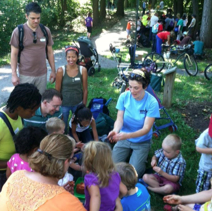
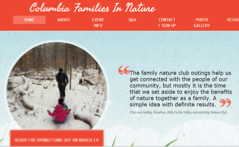
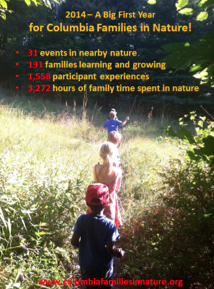
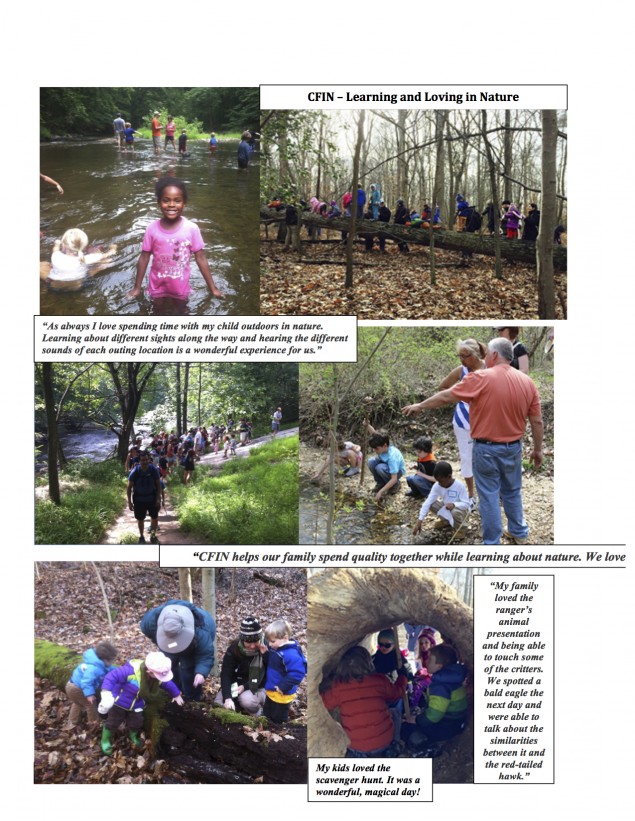
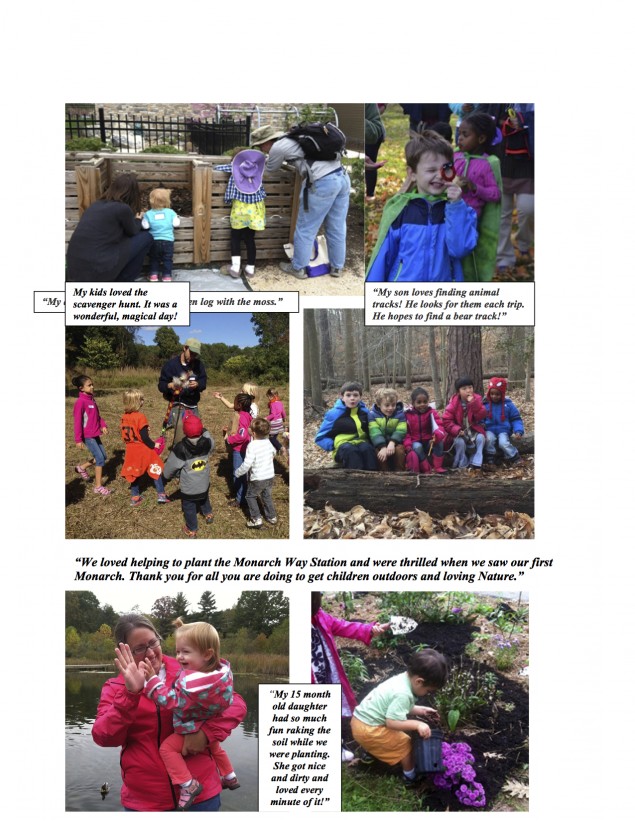
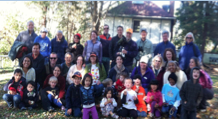



 Chiara is a mother, educator, researcher, writer, community organizer, and environmental consultant. She lives in Columbia, Maryland where she serves as the founder and director of Columbia Families in Nature, president of Trilogy Eco-Systems Solutions, and president of The Community Ecology Institute. Her work is focused on understanding the effects of time spent in nature on personal, social, and ecological well-being. She holds a M.S. in Environmental Science and Engineering and a Ph.D. in Sustainability Education. Her work can be seen at www.chiaradamore.com.
Chiara is a mother, educator, researcher, writer, community organizer, and environmental consultant. She lives in Columbia, Maryland where she serves as the founder and director of Columbia Families in Nature, president of Trilogy Eco-Systems Solutions, and president of The Community Ecology Institute. Her work is focused on understanding the effects of time spent in nature on personal, social, and ecological well-being. She holds a M.S. in Environmental Science and Engineering and a Ph.D. in Sustainability Education. Her work can be seen at www.chiaradamore.com. 
